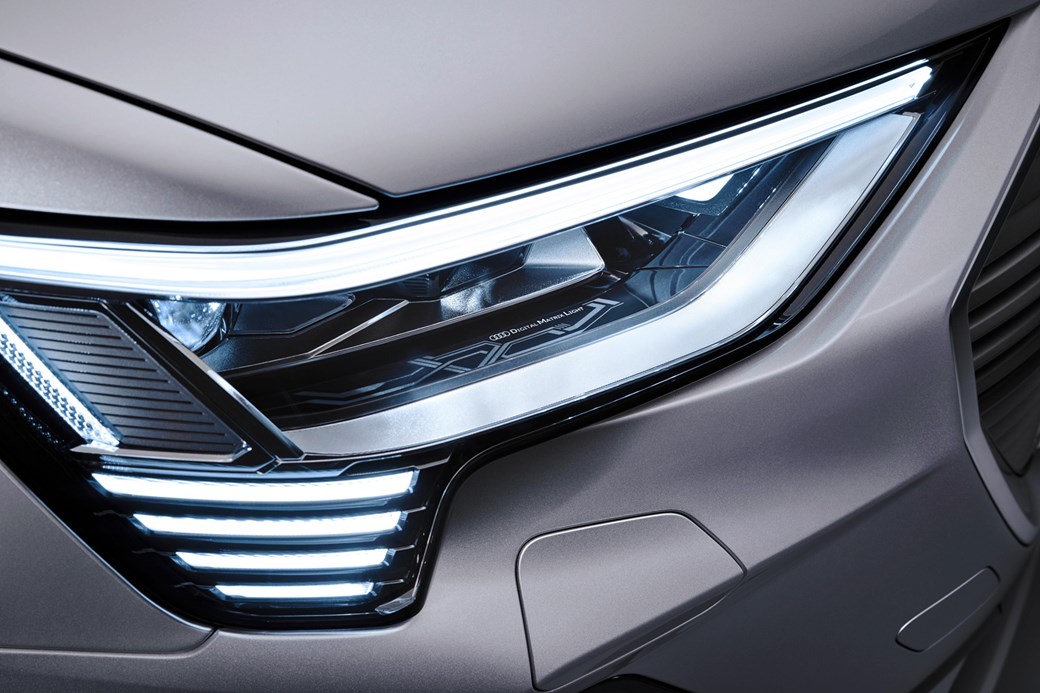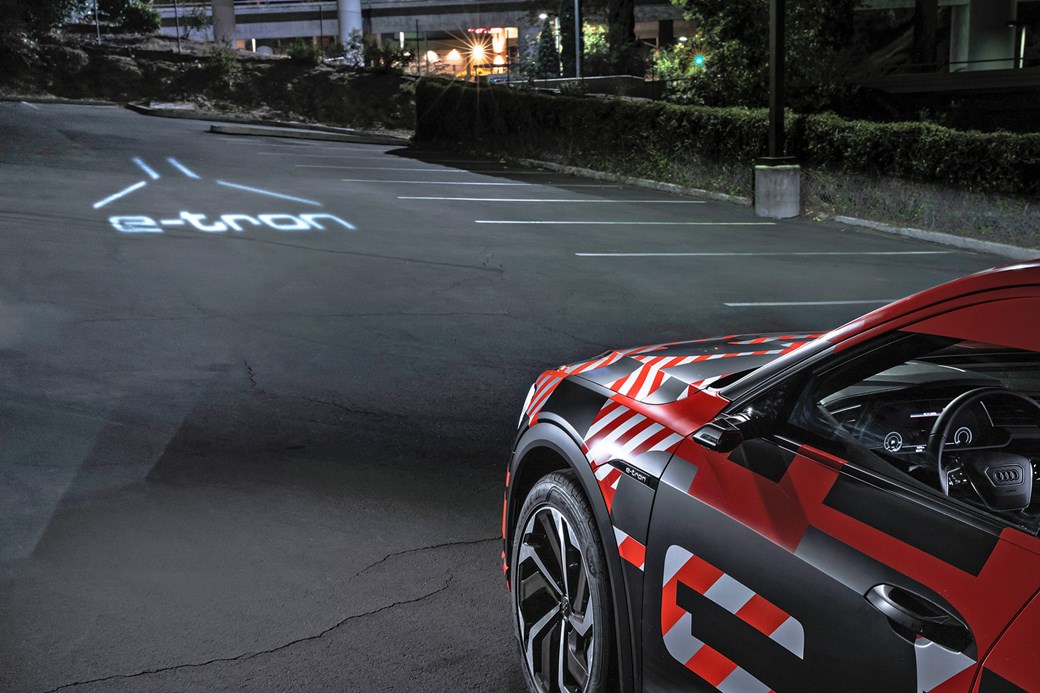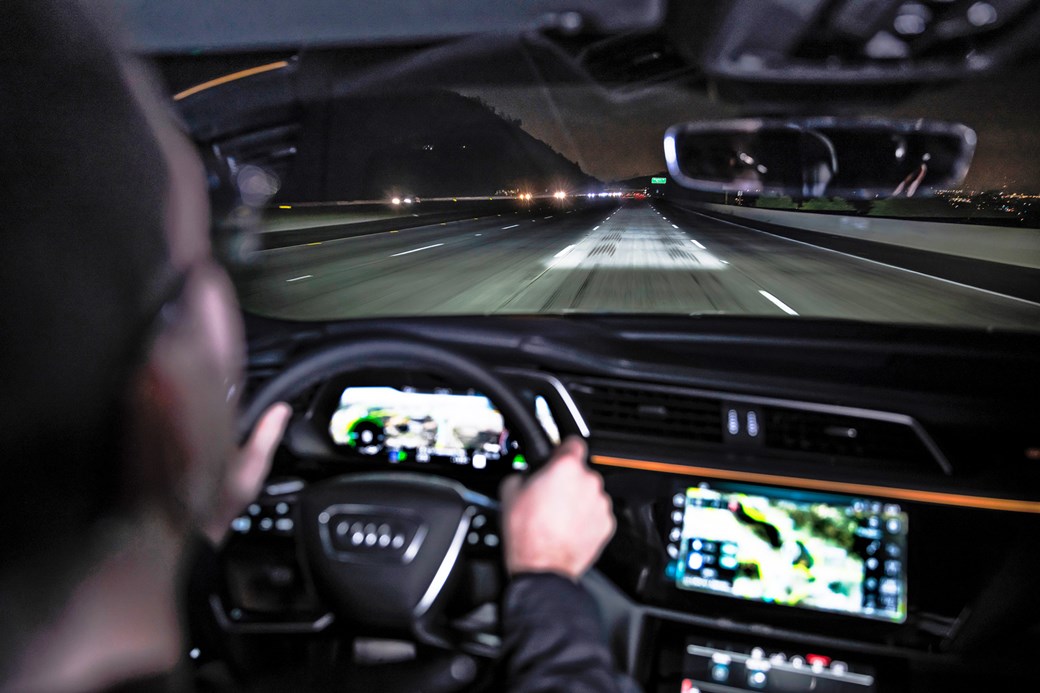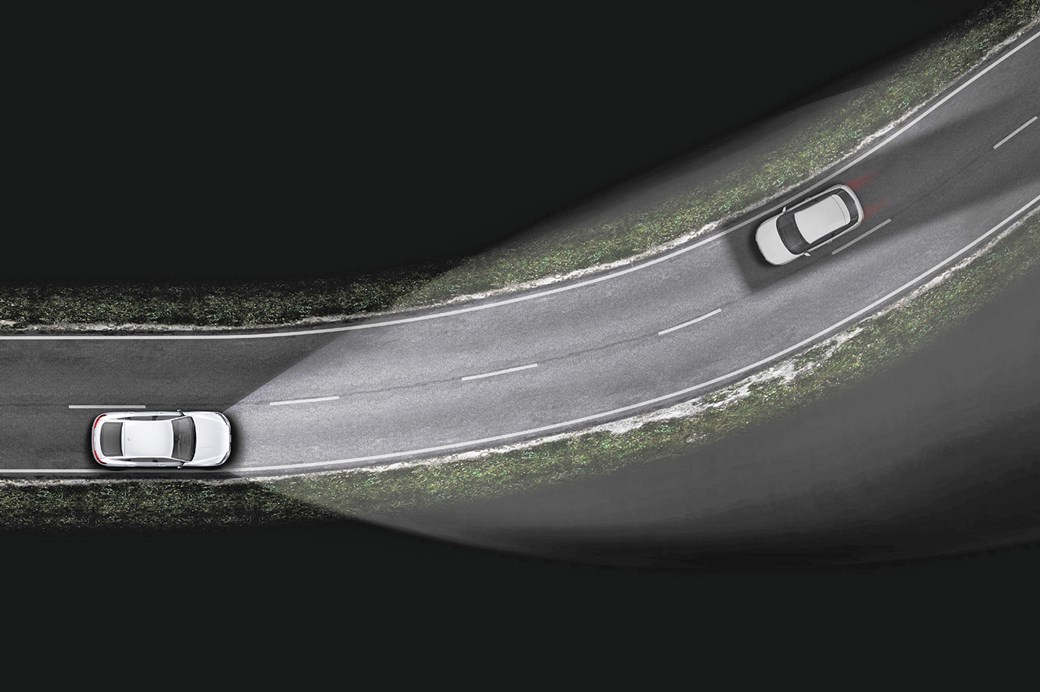The theory has never changed: to make driving at night safe, you need to make night as much like day as you can. And the problem hasn’t changed: the beams that light your way will dazzle oncoming drivers, so you need to dip your headlights.
Where there’s been progress recently it’s been in finding ways to minimise the spread and duration of that dipping. And Audi has taken that one step further with its next-generation system.
Its current state-of-the-art lighting, HD Matrix LED, is an adaptive system that works by splitting the traditional single headlight beam into dozens of smaller rays that can be turned on and off individually to un-light small areas in front. It uses 32 diodes per side, controlled by a forward-facing camera, and it’s largely effective.
The newer Digital Matrix LED units use a reflective chip about the size of fingernail that contains a million microscopic mirrors measuring a few hundredths of a millimetre each, meaning a much more accurate and pixelated beam can be generated compared with the old system’s 32 big blocks of light. Visually it’s the difference between playing Minecraft and the latest Call of Duty title.

But ‘slightly better than the old system’ rarely sells well, so on top of illuminating the road more fully and excluding other cars from your full beams with greater precision than the previous innovation, these digital headlights can pull off some neat party tricks too.
Firstly, when you’re on the motorway the car will project a carpet of light onto the lane in front of you, kept entirely between the white lines, and capable of curving with the topography of the road. Two rows of overlaid chevrons show the exact width of your car including door mirrors, so you can size up gaps in traffic or accurately place it between narrow roadworks.
And because the ‘micromirror’ at the heart of this system is basically the same tech as you get in a cinema projector, you could – in theory – use your car’s headlights for an impromptu film screening, given a suitable wall. As this function is unlikely to be homologated you’ll have to make do with a set of preloaded animations that the car can beam onto a vertical surface or the road when you start up or switch off. If you thought branded puddle lamps were the ultimate attention-seeker’s accessory, think again.
Digital Matrix LED: how it works

Look at me! Look at me!
Animations can be beamed onto a wall or the road when you start and stop. There’s no custom function so you have to make do with presets.

But this is useful…
This box beamed onto the road shows up tarmac defects and marks out your position between the lines and your distance from the car in front.

…and this saves lives
The main benefit is how much they illuminate the road without annoying other drivers. HD Matrix LED is good, Digital Matrix LED is better.
Does it work?
Yes. While the projected animations look cool they are ultimately frivolous. The real value comes from the ability to illuminate even more of the road while reducing glare – a double win. The projected guide for motorway use falls in the middle – a bit of theatre with a useful side.
Source: https://www.carmagazine.co.uk
CUT COTS OF THE FLEET WITH OUR AUDIT PROGRAM
The audit is a key tool to know the overall status and provide the analysis, the assessment, the advice, the suggestions and the actions to take in order to cut costs and increase the efficiency and efficacy of the fleet. We propose the following fleet management audit.




